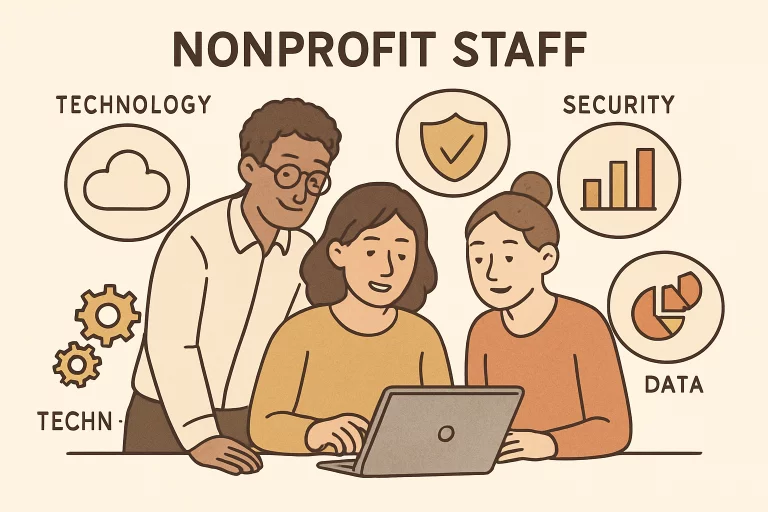Strategic planning helps nonprofits optimize resources, improve operational efficiency, and embrace innovation. It allows them to use digital tools to expand reach, refine programs, and deepen impact. This approach builds stronger bonds with donors and communities.
In the digital era, nonprofits face challenges like funding constraints, donor expectations, and service demands. Strategic IT planning is crucial for nonprofits to ensure technology investments support day-to-day operations and long-term mission fulfillment. For many forward-thinking organizations, partnering with experienced professionals in IT consulting for nonprofits has proven essential in navigating the intricacies of modern technology and establishing a digital framework that’s both secure and scalable.
Table of Contents
Aligning IT Strategy with Organizational Goals
Strategic IT planning for nonprofits should align technology initiatives with clear organizational goals. Leaders and technology advisors should collaborate to assess mission objectives, identify operational pain points, and prioritize investments for core programs. Focusing on tools and platforms that propel objectives ensures sustainability and meaningful progress towards the mission, avoiding distractions and maximizing resources.
Embracing Digital Transformation
Digital transformation in the nonprofit sector involves a holistic approach that integrates technology at every level, redefining how services are conceptualized, delivered, and assessed. Benefits include increased productivity, accuracy of records and reports, and stronger stakeholder engagement. Cloud solutions and analytics have revolutionized data management, collaboration, and infrastructure costs. Digital engagement platforms offer reliable and scalable ways to connect with communities, diversify fundraising channels, and improve donor experiences.

Regular Evaluation and Adaptation
Nonprofits must regularly evaluate and adapt their IT strategies to keep up with the rapid evolution of technology. This involves regular audits, feedback sessions, and benchmarking against industry standards. Regular feedback ensures the technology meets needs, while benchmarking helps identify areas for improvement. An adaptable IT strategy allows nonprofits to remain nimble in the face of change.
Enhancing Data Security and Compliance
Nonprofits must prioritize data protection to maintain trust and avoid legal risks. Implementing robust security protocols like multi-factor authentication, data encryption, and cybersecurity training is crucial. Partnering with IT consultants can ensure compliance with legal requirements and stay ahead of emerging threats.
Investing in Staff Training and Development
Nonprofits should invest in staff training and digital skill-building to maximize the return on IT investments. Regular workshops, coaching, webinars, and on-demand learning boost digital literacy and foster innovation. This reduces frustration, supports clients, and prepares the organization for future technology upgrades.
Building Strategic Partnerships
Nonprofits partner with technology vendors, managed service providers, or freelance consultants to manage complex IT environments. These partnerships provide scalable solutions, cybersecurity updates, and customized support for projects like cloud migrations and digital fundraising.
Measuring Impact and Continuous Improvement
Strategic IT planning is crucial for nonprofits to validate investments and adjust strategies. By tracking key performance indicators (KPIs), decision-makers can direct resources, fix inefficiencies, and replicate successful initiatives. This data-driven culture strengthens program accountability and transparency, transforming IT from a cost center to a catalyst for sustainable growth and greater mission impact.







